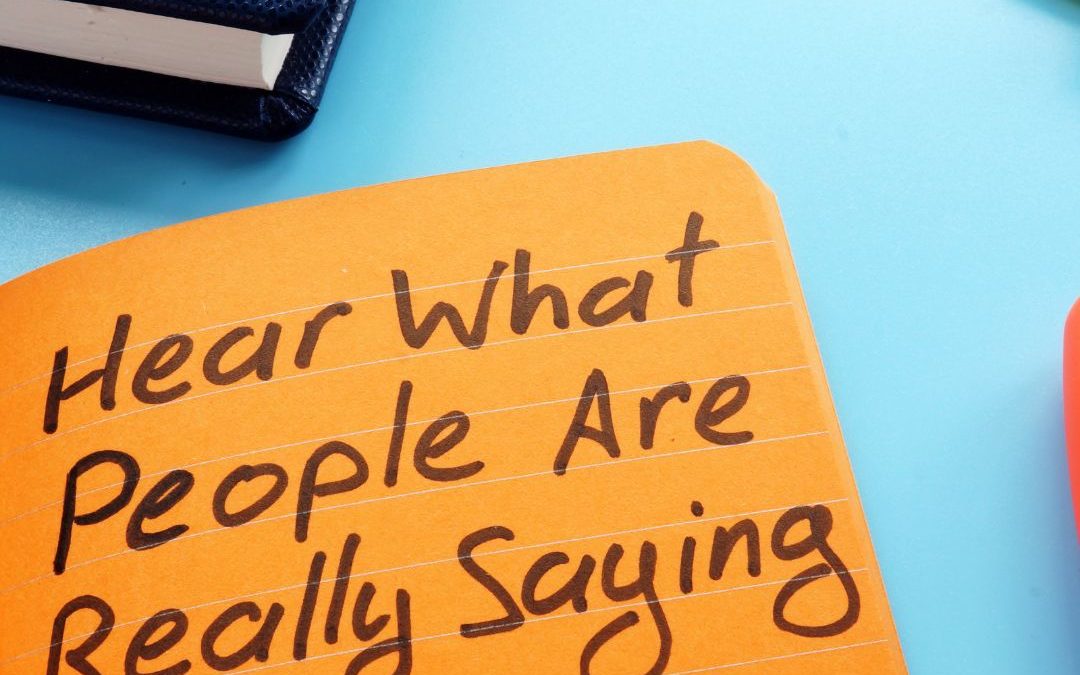
Message written an orange sticky note pad
Written by Susan Merli
No matter how long I have been teaching and presenting on the topic of effective communication and the art of giving and receiving feedback, it never ceases to be a sought-after topic.
Most conflicts in life and in relationships can be boiled down to communication. Whether it is communication with oneself or communication with others, at times, we all struggle to navigate through our thoughts, beliefs, feelings, fears, and words.
What trips us up? We worry about:
- Hurting someone’s feelings
- Wondering if they won’t like us if we speak our truth
- Feeling uncertain if we are justified in our thoughts and beliefs
- Be confused that we may be wrong, selfish, or petty
- Messing up how we communicate our needs and boundaries
- Using words that are hurtful and that we can’t unsay
The list goes on, but here’s what I’ve come to learn as both an executive coach and a registered psychotherapist,
- Being true to yourself and that includes connecting deeply with your core needs (attention, affection, appreciation, and acceptance) will never steer you in the wrong direction.
- Once you’ve identified what will help you to feel safe and to thrive, you need to learn how to communicate your needs clearly and with a specific request of either yourself or of others.
Suggested Viewing:
The Art of Effective Communication
The Thoughts You Think
It starts with the thoughts you think to and about yourself.
Your inner saboteur or judge is a diligent and vigilant schematic narrator. If you let it, this judge will hold sway over your thoughts and actions and keep you trapped in feelings of self-doubt, shame, guilt, inferiority, confusion, anxiety, and frustration.
Suggested Reading:
How to use positive intelligence in your life
Take the free Saboteur self-assessment.
The more you can recognize your judge and the voices in your head that generate negative emotions in the way you automatically make patterns in your mind for how to think, feel, and react (mental schemas or stories you tell yourself), the more you’ll be able to positively shift how you see yourself in the world and the relationship you have with others.
Communication Styles
When we engage with others – be it in a team environment, a family unit, a team sport, or a community activity – we need to communicate too.
Not everyone (in fact no one) thinks the same way as you do. Yet we make assumptions that others approach a problem or a goal as we think about it. We can run into problems when we jump to conclusions, forget to actively listen, and revert to an unhealthy manner of hearing but not listening, and speaking through a clouded lens of fear, anger, or frustration.
If you are an Authentika newsletter subscriber, you know that I’m a fan of building self-awareness. It is a cornerstone to communication and successful relationships.
The Four Main Styles of Communication
Knowing your ‘go-to’ preference for communication is a key step in developing self-awareness.
There are four styles of communication:
- Passive: “I’m okay with whatever you want to do”
- Aggressive: “This is what we’re going to do”
- Passive-Aggressive: Using passive statements and body language followed by giving the “silent treatment”, spreading rumors, and sabotaging another person’s efforts.
- Assertive: Using “I” statements like “I feel…when you…and I need for you to do…”; body language includes eye contact, straight posture, and relaxed gestures (Princeton University, n.d.)
Download the tip-sheet to learn more this topic.
It’s a Mashup
While we have a preference for one communication style, especially when we are stressed or fearful, we don’t just use a single style.
If you’re wondering which style is the most effective – work toward the assertive approach for most situations in life. It will serve you well.
Reference
Princeton Education (n.d.) You Matter. https://umatter.princeton.edu/respect/tools/communication-styles#:~:text=There%20are%20four%20main%20styles,passive%2Daggressive%2C%20and%20assertive.



